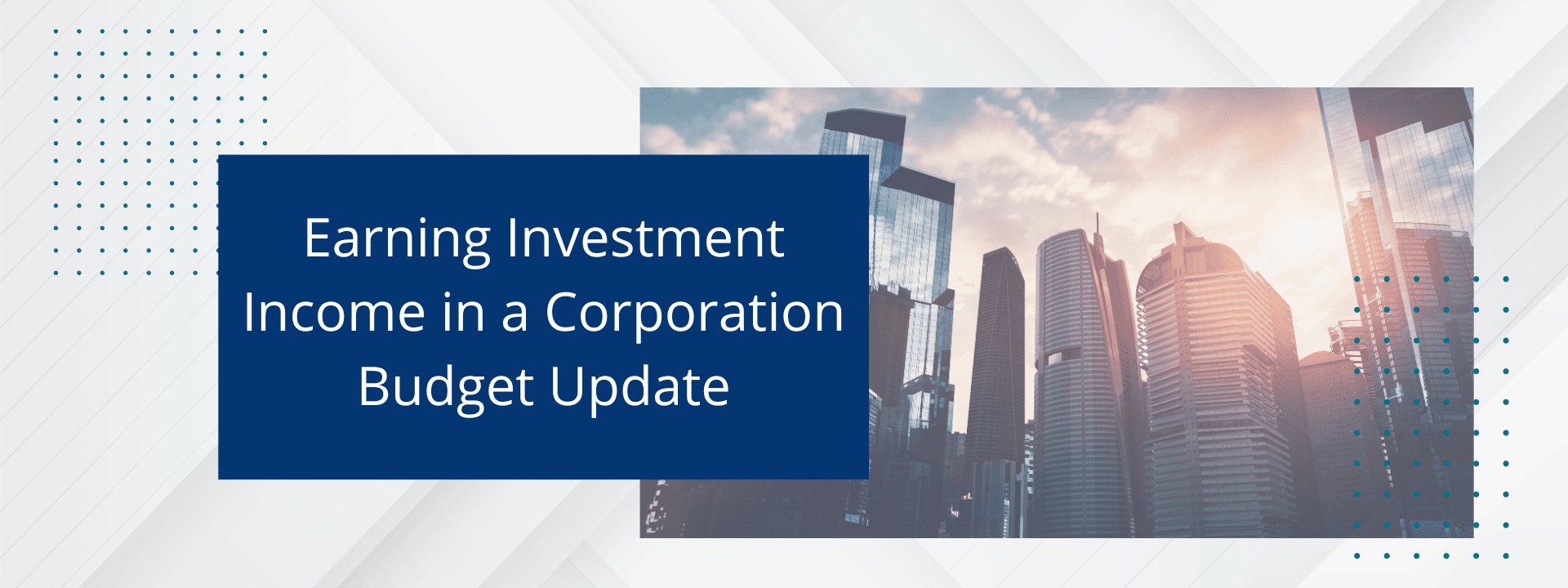For your FREE Copy of Preserving Wealth, CLICK HERE
Written by: Jack Lumsden, MBA, CFP®, Financial Advisor, Assante Financial Management Ltd.
A great strategy many owners of Canadian-controlled private corporations (CCPC) use to build up retirement savings is to invest within their corporation using the benefit of the tax deferral between their personal income tax rate and the small business income tax rate.
Investing within your CCPC offers the potential to defer the taxation versus simply paying out the income to yourself and then investing the after-tax capital. The reason is if your company is earning active business income, you should be able to claim the small business deduction (SBD) which allows a Canadian-controlled private corporation (CCPC) to pay a lower tax rate to a $500,000 threshold in most provinces. This tax rate could be lower than your personal tax rate.
How is the Income Earned Taxed?
There are two types of income you can earn with your CCPC:
Active Business Income: This is income from your business activities, and CCPC pays tax at the small business rate (In Ontario it is 12.20% on the first $500,000).
Passive Income: This is the income from non-business related activities, such as income from investments, for instance bank accounts, GICS, High-Interest Savings Accounts, bonds, stocks, Mutual Funds, and ETFs.
With passive income there is a flat effective tax rate, and in Ontario, the most tax-effective to least is:
Ontario
Capital Gains: 25.1 (Est 33.63% once budget passed)
Eligible Canadian Dividends: 38.3%
Interest Income: 50.2%
Source: Mackenzie Financial: 2024 Income in a Corporation for Ontario
The capital gains tax will increase after June 25, assuming the most recent Canadian Budget is passed, as the inclusion rate for capital gains in corporations will increase to 67% from 50%.
What does this mean?
To reduce your tax burden, you will want to have investments that generate capital gains and Canadian dividend income and avoid interest income and foreign dividends.
One solution is to examine corporate-class mutual funds. With their structure, they can only provide capital gains and dividend income and avoid the distributions of interest income/foreign dividends.
What options do you have for Cash Investments?
Many business owners keep money as cash reserves in investments such as High Interest Savings Accounts and/or GICs, and that income is taxed at 50.2%.
So for example, if the High Interest Savings Account is paying 4.90%, you earn after tax 2.44%.
To generate a greater after-tax return, you may wish to look at money market funds in a corporate class structure as the income earned could be capital gains, potentially offering a higher after-tax return (33.36% capital gains tax rate vs 50.2% interest income tax rate).
Small Business Limit Reduction
Another reason to reduce the passive income earned by using tax-effective investments is once your passive income exceeds $50,000 per year, you will start to lose part of the small business tax rate on Active Business Income (12.20% in Ontario), and it is eliminated at $150,000 of passive income. You will want to review this with your accountant.
What to do next?
This would be a good time to review your investments you have in your corporation, and specifically options for cash reserves.
Are You on Track with Your Retirement Strategy? FIND OUT TODAY!
For more information, refer to Preserving Wealth: The Next Generation – The definitive guide to protecting, investing, and transferring Wealth by Jack Lumsden, MBA, CFP® or schedule a call with Jack at 905-332-5503
Jack Lumsden is a Financial Advisor with Assante Financial Management Ltd. The opinions expressed are those of the author and not necessarily those of Assante Financial Management Ltd. Please contact him at 905.332.5503 or visit www.jacklumsden.com to discuss your circumstances before acting on the information above.


